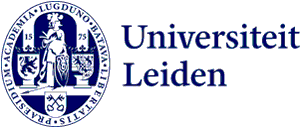Diversity and inclusion
In an inclusive learning environment, every student feels welcome, valued and respected.
What is inclusive teaching?
Inclusive teaching is based on the principle that all students should be able to actively participate in the learning process, regardless of their ethnicity, gender, religion, sexual orientation, disability, age or socio-economic background.
In addition to ensuring accessibility in the learning process, it is also important to foster diverse approaches to both traditional and contemporary subjects.
The Teaching Guide for an Inclusive Learning Environment (in Dutch only) is a good starting point for tips and advice, and is based on existing resources and best practices. Each section addresses a specific topic with questions, tips and resources, arranged in sequence of lecture design and implementation.
Vineet Thakur
University lecturer International Relations (Institute for History)

For me, inclusive teaching requires constantly rethinking my own ideas of pedagogy. To a certain extent, teaching requirements differ from course to course. So, flexibility is key. But at the same time, it is equally important to be attentive to the needs of all students in the classroom. It requires thinking through one’s own blind spots as a teacher that are ideological, experiential and/or embodied.
Inclusive teaching entails having a greater repertoire of tools available and avoiding any dogmas – including that technology necessarily makes education more inclusive.
It also implies listening to more voices in the classroom and bringing in diverse voices from the outside. Eventually, the job of the teacher is not to convince the student of a perspective but to alert them to a wider range of perspectives. Finally, a good teacher, I have learnt in these years, knows how to navigate awkward silences in the classroom.
Mo Gordon
Lecturer (Centre for Linguistics)

Inclusive teaching to me is respect for everyone and access to learning for everyone, regardless of a student’s background or abilities. The teaching material should also reflect this; it should approach topics from multiple perspectives representative of not just one culturally dominant group.
I try to foster a learning environment in which students of different backgrounds and abilities feel safe to participate and feel comfortable to let me know what I can do to meet their needs. I think an important way I try to do this is by showing students that I am open to everyone’s comments and feedback in class. I let my students know that I try to cater for their needs as much as possible but that they should feel free to approach me if there is anything I can do to help them or adapt my classes in any way.
Leiden University offers several teacher training courses that specifically focus on teaching inclusively. They are essential in creating more awareness and providing the necessary tools for an inclusive classroom. I must confess that I mostly became more sensitive to diversity in the classroom through experience, and I am still learning to become a more inclusive teacher. I do think, however, that the latter is vital. You need to keep monitoring yourself as a teacher; what implicit biases do I have as a teacher? How can I address them? What can I do or say in my classes to make them accessible to a diverse group? Lastly, as teachers, we set an example and provide role models to students. Therefore, diversity amongst the staff is essential so that students of various backgrounds and abilities will see themselves represented in some way. If you ask me what could be done more, look into a hiring policy that facilitates diversity.
Due to the selected cookie settings, we cannot show this video here.
Watch the video on the original website orSupport
We facilitate teachers in creating and maintaining an inclusive learning environment in several ways:
Training options
Training courses focus on practical skills and provide hands-on tools that you can use to make your teaching more inclusive. For example, we offer the following internal courses:
- UTQ module Inclusive Education
- Active Bystander
- Implicit Bias
- Intercultural Competences for Lecturers and Supervisors
- Inclusive Classroom: Difficult Conversations and Situations
Further options are available on request (via internal or external providers), such as the Inclusivity Pathway Training or supervising students with diverse cultural backgrounds (website in Dutch only).
If you have any questions or would like to discuss the options, please contact us!
Accessibility
30% of students in Dutch higher education have a disability. The most common disabilities are dyslexia, mental health problems and chronic illnesses. 10% experience obstacles due to these often invisible disabilities. The Accessible Education webpage gives more information on what teachers can do to support students with a disability; for example, developing accessible teaching material.
Leiden University has an expertise centre for studying with a disability: the Fenestra Disability Centre. The staff will be pleased to advise teachers with specific questions about supervising students, and can be contacted via fenestra@sea.leidenuniv.nl.
Diversity Card Game
The What’s Your Story? card game aims to enable participants to exchange stories about diversity, inclusion and belonging.
More about D&I in the Faculty of Humanities
The Diversity and Inclusion dossier gives more information about the Faculty of Humanities vision on diversity and inclusion. You will also find useful tools, resources and information about upcoming activities and events.
